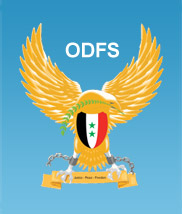Concern over possible use of chemical weapons in Syria
Saturday, 23 March 2013
Searching for Truth in the Derbis.
Channel 4 News: Alex Thompson
MARCH 23, 2013
What follows amounts to Syria’s version of events in the attack near Aleppo on Tuesday in which 26 people died in unexplained circumstances. It comes from three senior medical and military sources in Damascus and in the Aleppo area. All wish to remain anonymous.
It is the government version of events but it conforms to the few undisputed facts of the case: the low number of causalities for an alleged chemical attack; the fact that the UN took Syria’s complaint seriously and acted upon it and the fact that Syrian soldiers are among the fatalities.
Damascus says it has conducted tests on the Victim’s blood samples and also soil samples and the rocket debris itself.
It says the results have already been sent to the UN team investigating. I am told the Syrian officials have also supplied the phone numbers of the doctors who treated the victims to the UN and has vow to co-operate fully with the UN investigation which is now underway.
Syria believes the chemical involved was a relatively small amount of chlorine gas, namely CL17 which was dissolved into saline solution in a home-made rocket. Two separate military sources have confirmed to Channel 4 News that it was a rocket and not a shell.
Syrian sources say the missile was fired from an area close to Al-Bab which they say has been in the control of the Islamist group Al-Nusra Front for some time and that it hit a military checkpoint on the edge of Khan al-Assal to the west of Aleppo.
Chlorine is ranked Tier 2 on the international classification of banned chemical weapons. That is, it is a known chemical agent capable of being weaponised and producing harmful effects but due to the way it vapourises and the toxicity involved, it is not considered a weapon of mass casualty effect in the way that Tier 1 chemicals such as sarin would be.
It is known that Iraqi forces experimented extensively with chlorine before deciding against it for these very reasons.
It is obviously easily available being widely used as a chemical in industrial sectors as well as for keeping swimming pools clean. There is also (and this my prove a telling detail) a chlorine factory just to the east of Aleppo.
All in all weapons experts would consider chlorine as a not particularly effective chemical weapon in terms of effect, but one ideally suited to home-made weaponising because of factors like its stability and availability.
In short the kind of device that conventional armies would not be interested in, but a militia group might just be. The area it hit, Khan al-Assal, has been in government hands since 17 March in an area where control often changes hands rapidly between the rebels and the Syrian Army.
All sources we have spoken to say there is a pattern of victims suffering a variety of respiratory complaints from mild breathing difficulty, through fainting and vomiting to loss of consciousness and death. In most cases there were no signs of any conventional blast injuries in terms of external lacerations, burns or fractures, they say. Quite simply, one medical source connected to the hospital in Khan al-Assal said he has never seen anything like it.
Let me stress again this is a war. All sides tell lies. I do not say any of this is credible or otherwise. But I do say that whatever Syria told the UN, the UN certainly found it credible enough to investigate. It is the most detailed account yet of what the Syrians believe happened.
More news articles

